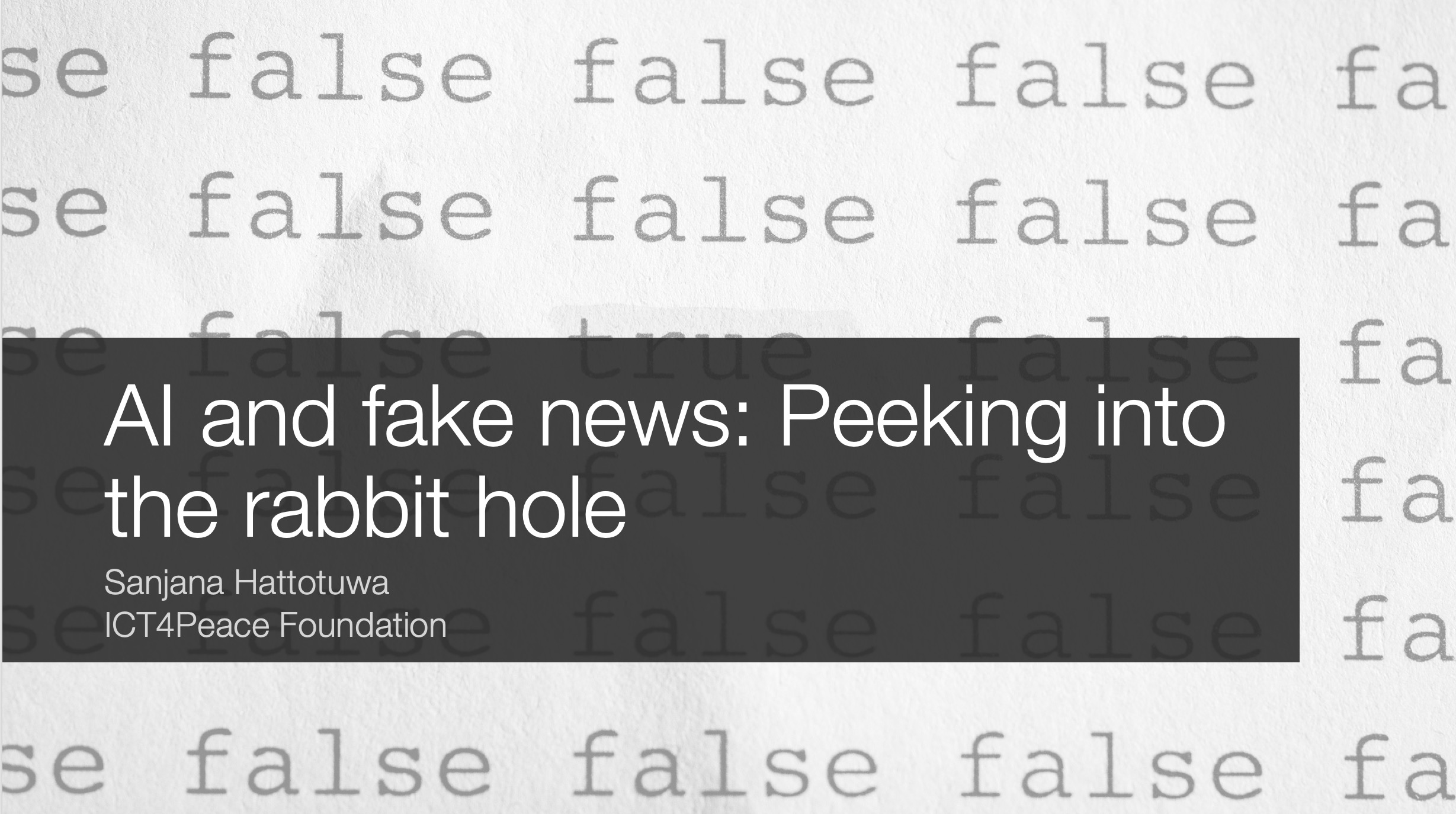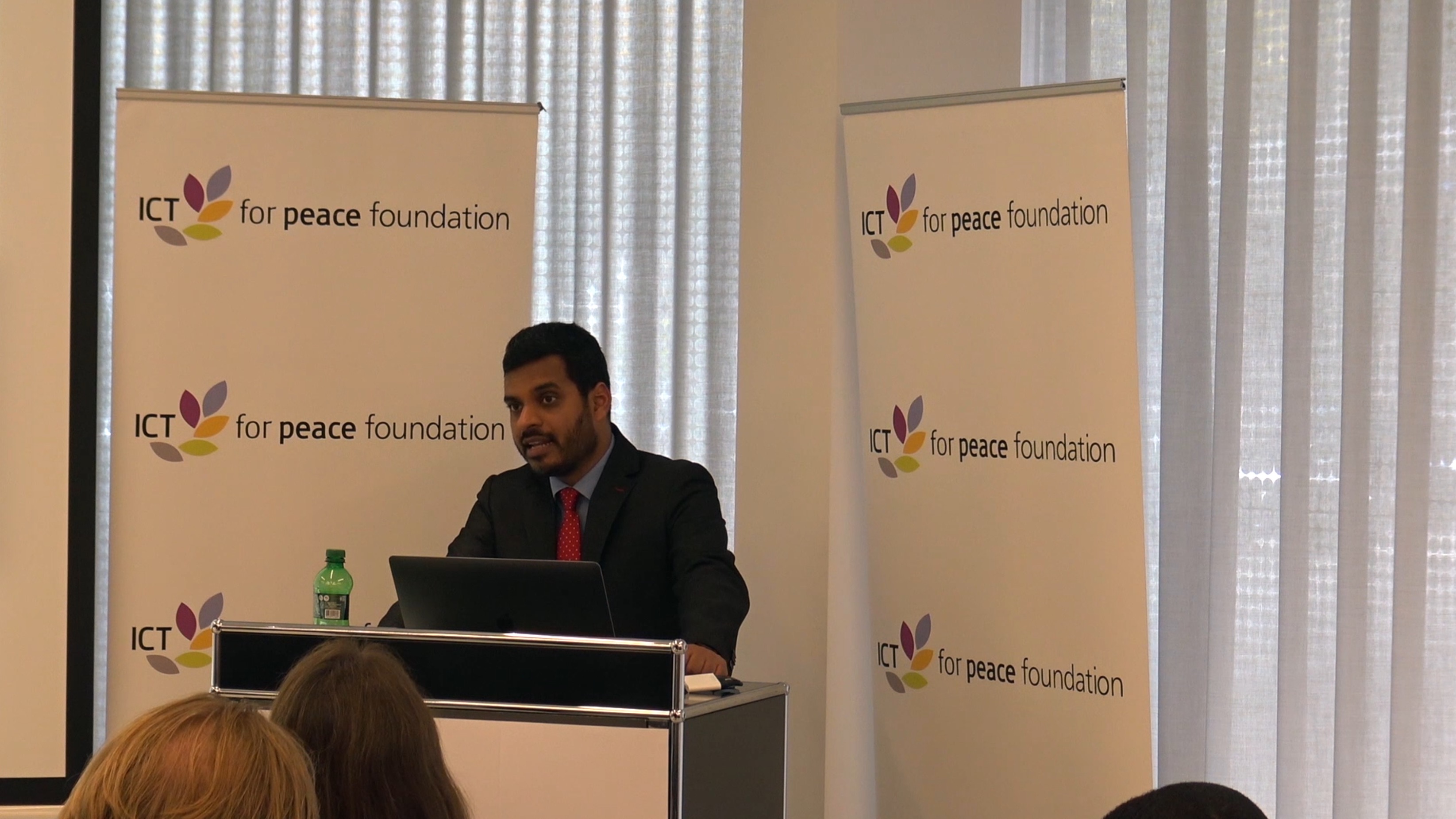On 21 September 2018, Sanjana Hattotuwa, Special Advisor at the Foundation, delivered a lecture on Artificial Intelligence and ‘Fake News’ to a packed room in Vischer AG in Zurich, Switzerland. Details and an overview of the event can be read here. Sanjana’s presentation, which lasted around an hour, followed by around forty minutes of vibrant, probing questions from the audience, was anchored to the role AI would play in the production, promotion, presentation and engagement with content online, as well as over social media.
A recording of the full session can be seen below. It is also on Facebook here. Download the complete slidedeck as a high-quality PDF here.
Sanjana began with a disambiguation of the term ‘fake news’, and proceeded to present a typology of the kind of misleading content prevalent online, not all of which was produced with malevolent intent. Focussing on the ubiquity of AI in our personal and professional lives by showcasing some of the platforms, devices, tools, apps and services that are household names globally, Sanjana’s thesis was that misinformation and disinformation needed to be located within specific socio-political contexts, and couldn’t be understood in a vacuum.
The next slides showcased how millennials, or those generally between 18-40, consumed content and how, importantly, their political frames were first, or most clearly, defined. Looking at the kinds of disturbing content shared over social media in Myanmar and Sanjana’s home country, Sri Lanka, Sanjana looked at how propaganda and influence operations weren’t new phenomena in the main, and how computational agents and algorithms enhanced the possibilities of what was done and perfected over decades.
Sanjana then looked at some factors, from the visual design of social media platforms to shifting markers of veracity of online, that aided the spread and generation of misinformation. Three key effects of misinformation were flagged, and how such content was able to,
- Amplify partisan frames
- Drown out inconvenient truths
- Seed distrust at scale
Sanjana’s experience in the study and pushback against bots, trolls and information operations served to illustrate how in the real world, algorithmic agents operated. Focussing on news and media, Sanjana also flagged how AI was not all doom and gloom. Examples were shown on how leading newsrooms and media institutions were investing heavily on AI for their work and reportage.
Sanjana then switched to the phenomena of ‘deep fakes’, how digital content could be manipulated, and how vectors like psychometric research were being weaponised to varying degrees. Sanjana then focussed on how the emerging landscape was one were ‘good’ AI was being pitted against ‘bad’ AI.
Sanjana ended by noting that AI and fake news was anchored to what was a renewed debate around the rational, logical responses to difference and debate, and the emotional, kinetic, physical reactions to what one saw, heard, read or otherwise came to know about.


